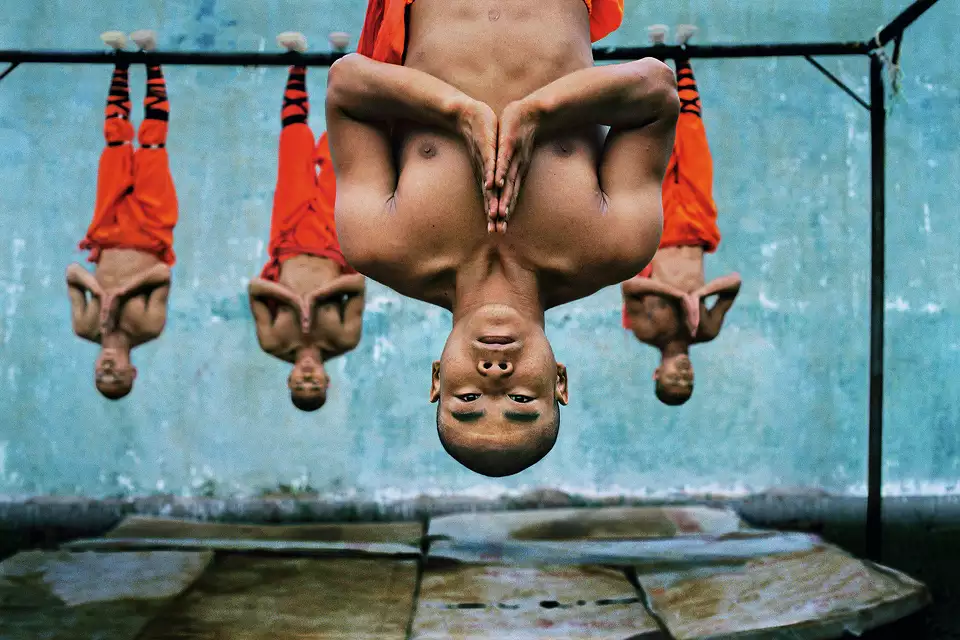The Ethics of Photojournalism
Steve McCurry's vibrant and brilliant photographs are featured below. Showing them highlights his magnificent work – it is not to claim they have been altered in anyway.
 |
"Shaolin Monks Training" by Steve McCurry. Displayed at the Cavalier Gallery in Greenwich, CT. |
Steve McCurry was
featured in Time Magazine in 2016; Steve
McCurry: I’m a Visual Storyteller, not a Photojournalist by Olivier Laurent. McCurry is a well-known and
respected photojournalist with a forty-year career who has received awards and
had many of his photos praised (Laurent). However, in 2016, some of his images
were questioned regarding being altered in Photoshop (Laurent). As more and
more people questioned his work, he responded with, “I’ve
always let my pictures do the talking, but now I understand that people want me
to describe the category into which I would put myself, and so I would say that
today I am a visual storyteller,” McCurry tells TIME Magazine. I chose
this controversy regarding the alteration of photos because I feel in relates similarly
to AI issues of today. I think photojournalists need to relay the truth; it is
their job. It is not always the perfect image but it is reality. So whether the
image is altered in Photoshop or created with AI this is not accurate to the
truth. AI is a potential threat in that the picture can be entirely forged; it
is not based on reality; it has gone from changing a detail through Photoshop
to entirely making a new image and saying it is a real photo. In Laurent’s
article, Steve McCurry stated he was a freelancer, never an employee of the News
Organization therefore not a photojournalist, so what he did should not be an
issue.
 |
| Steve McCurry stands among his photographs, including his most famous, "Afghan girl," in the Museum of Arts and Crafts in Hamburg, Germany. (Photograph by Ulrich Perrey, Corbis) |
I feel that Steve McCurry was dishonest; even though he
claimed to be a freelancer, he was well aware that some of his images would be
presented in mediums that consumers anticipate photojournalistic integrity to
be represented in the photos. Regarding my ethics, I value honesty, which I do
not feel McCurry was doing with his viewers. Whereas I value logic, and I
understand wanting to have the perfect picture that will be very impactful and
altering his images created that to happen, I believe honesty overrides that
desire. I think that Steve McCurry promised his audience as a photojournalist
to show life accurately and relay the truth. Truth is one of my ethical
principles, which should be a principle of all photojournalists. Additionally,
I value being a caring person, and my ethical principles would not allow me to
deceive my viewers by publishing false narratives through my photography. I think another article in Time Magazine also about McCurry,
Why Facts Aren’t Always Truths in Photography, where Peter Van Agtmael speaks to the need to have
exact rules regarding what kind of photo you are presenting as a photojournalist.
The article points out their ethical principles differ from commercial and art
photography vs. photojournalism (Agtmael). Peter
Van Agtmael explains, “It is essential that the lines between these genres are
clear, well delineated, and communicated to the audience.” My ethics align with this kind of transparency
in photography.
 |
| PowerPoint Slide By Daniel Fraher |
Comments
Post a Comment